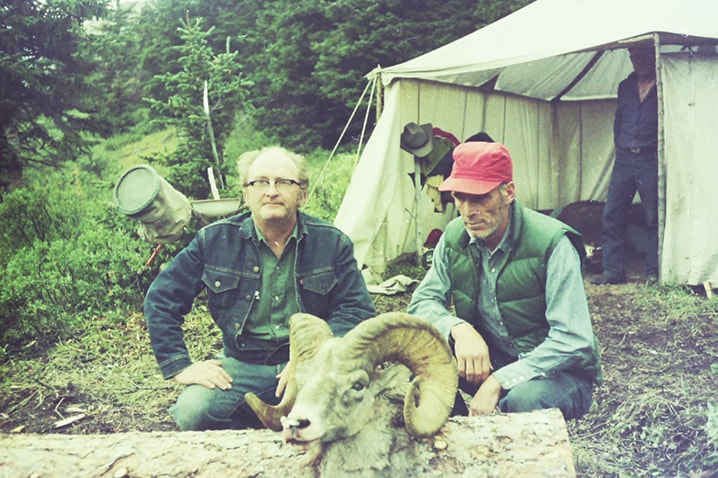As I sit down at our new computer, it reminds me that today is the 48th anniversary of the first publication of these weekly columns in The Advocate on May 6, and elsewhere later.
I have been looking a lot at hundreds images of the good old days lately, partly also as a result of the new computer.
When I first started the outdoors writing, the newspapers and many magazines printed only black and white pictures. The magazines that printed colour insisted on slides only; later reluctantly relenting about prints from quality colour print films.
In the early days of digital, many publishers insisted they’d have nothing to do with an equipment-intensive and expensive fad.
Now, most of them require being emailed digital images only, and the more megapixels the better.
The result is that I have a far larger problem than the many readers who keep on requesting suggestions about what to do with old slides, prints, negatives, etc.: I estimate I have 10,000 slides in storage and half as many black and white and colour prints and their negatives, and more pop out every time we open another obscure drawer.
For some time I have been carefully selecting 200 slides at a time and taking them to London Drugs to be converted to digital images.
The results have been excellent, but could be considered expensive (99 cents each for up to 100, down to 65 cents each for more than 100) for most people who do not have the option of recovering some of those costs by selling the images.
For more than two years my Hammacher Schlemmer Portable Stand Alone Digital Image Copier has reposed, forlorn and unused in its box, because I hadn’t noticed that at least Windows 7 was needed in our computer to read the copier’s memory card.
That deficiency was remedied a month ago when we replaced our senescent old computer and its no-longer supported Windows HP Home software with new hardware with Windows 7 and an integral memory card reader.
As soon as the new rig ceased driving me totally crazy, I gave the copier’s battery the suggested five-hour charge and got started on what has turned out from the beginning to be addictive fun for me and for others when I email them images of themselves and their outdoors adventures of yesteryear.
These copiers are essentially a specialized digital camera that photographs film images.
With this one, you load slides or negative film strips (always glossy side up) into the trays that come with the copier, slide the tray into the copier, and, when ready, press OK to take the picture within three to five seconds.
Being ready includes correcting or improving the exposure of the original image to your eye’s liking.
The images are saved on the copier’s SDHC memory card.
The one that comes with the copier is smaller than my ring fingernail and has to be inserted into a dummy adaptor to bring it up to the postage stamp size that will fit in the card reader slot.
The tiny card is said to have the capacity to store 10,000 images.
So far, mine holds only the digitized contents of three waste paper baskets of discarded film stuff: considerable storage space has already been freed up.
The copier comes with software for further and more sophisticated editing of the images.
We have installed that on the computer, but so far have not used it, probably because I have always had the professionals’ habit of taking so many pictures of the same thing that odds are there has to be one there that is perfect … to my eye anyway.
The resulting digital images of my slides and negatives are nine megapixels, above the minimum requirements of all my publishers so far, but they sometimes raise the bar.
So, to see what’s new, I went to Hammacher.com on the internet, then to Electronics and finally to Media Conversion. Obviously my copier is no longer available, replaced by “The Superior Slide and Negative to Digital Picture Converter.”
My copier was actually made by VuPoint Solutions, and I’m betting this new superior “Hammacher” is VuPoint, too.
Whatever, at $149.95, no shipping charge to Canada, I’m starting to get that “gotta have it” feeling.
Major reason for that is this new model is 14 megapixels and that should improve on the already high resolution of the digital images from my copier. There is also an accessory slide feeder offered, and I’d just like to see how that works.
Now I am worried about storage again. Just as it is difficult finding what it is I want to digitize among the binders and piles of my stored film images, it is ridiculously and frighteningly easy to lose a tiny SDHC card storing thousands of those selected and edited images.
Bob Scammell is an award-winning columnist who lives in Red Deer. He can be reached at bscam@telusplanet.net.
